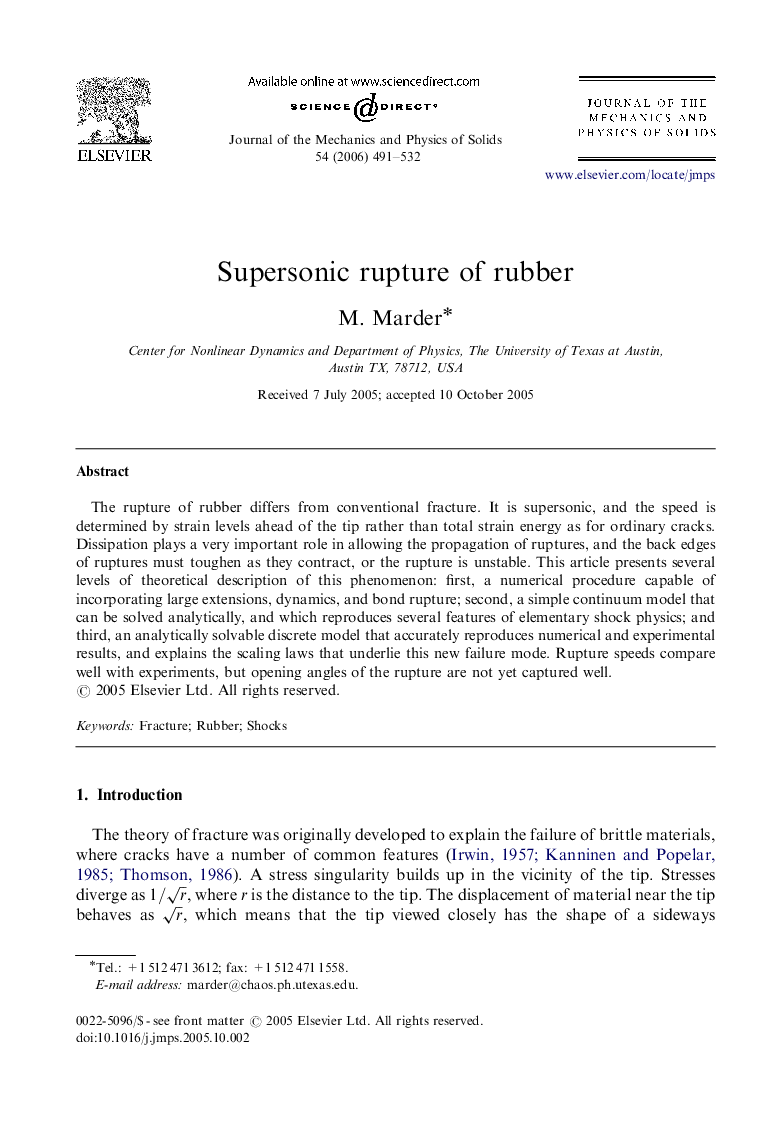| Article ID | Journal | Published Year | Pages | File Type |
|---|---|---|---|---|
| 800283 | Journal of the Mechanics and Physics of Solids | 2006 | 42 Pages |
The rupture of rubber differs from conventional fracture. It is supersonic, and the speed is determined by strain levels ahead of the tip rather than total strain energy as for ordinary cracks. Dissipation plays a very important role in allowing the propagation of ruptures, and the back edges of ruptures must toughen as they contract, or the rupture is unstable. This article presents several levels of theoretical description of this phenomenon: first, a numerical procedure capable of incorporating large extensions, dynamics, and bond rupture; second, a simple continuum model that can be solved analytically, and which reproduces several features of elementary shock physics; and third, an analytically solvable discrete model that accurately reproduces numerical and experimental results, and explains the scaling laws that underlie this new failure mode. Rupture speeds compare well with experiments, but opening angles of the rupture are not yet captured well.
